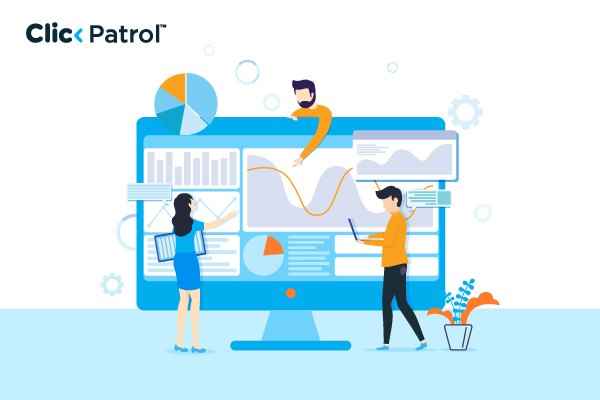
Pre-bidding in advertising: Boost ad performance with smarter inventory screening
Abisola Tanzako | Aug 13, 2025

Table of Contents
- How pre-bidding works in programmatic advertising
- Benefits of pre-bidding in advertising
- Types of pre-bidding in digital advertising
- Challenges in pre-bidding
- Should you use pre-bidding or post-bidding? Comparison guide
- 1. Revenue potential
- 2. Setup complexity
- 3. Transparency
- 4. Page load speed (Latency)
- 5. Control for publishers
- 6. Best for
- Pre-bidding: The smart move for innovative advertising
- FAQs
Pre-bidding filters can reduce ad fraud by up to 60% and increase ROI by 25%, according to eMarketer (2024). Unlike traditional approaches, pre-bidding allows advertisers to evaluate ad inventory quality before participating in real-time bidding (RTB) auctions.
With real-time information and predictive filters, such as viewability, fraud protection, and brand safety, advertisers can proactively pursue high-value impressions and avoid wasteful spending.
As programmatic advertising becomes increasingly sophisticated, pre-bidding provides an essential management layer, enabling brands to serve the right ads to the right people at the right time.
This guide explores pre-bidding mechanics, benefits, implementation tips, and its place in modern programmatic strategies.
How pre-bidding works in programmatic advertising
Pre-bidding is a crucial process in programmatic advertising that enables advertisers to review and filter ad inventory before participating in real-time bidding auctions. How it works:
1. Inventory becomes available: Every time the user visits a page or an application, space is allocated for an inventory of the displayed ads.
Impressions are forwarded to demand-side platforms (DSPs) that advertisers have contracted with, allowing them to bid and estimate their costs.
2. Pre-bid analysis begins: Advertisers pre-screen before bidding. Here are five essential pre-bid filters, what they do, and standard tools used to apply them:
a.) Viewability
- Purpose: To ensure ads are seen by real users (e.g., not hidden below the fold).
- Example tools: MOAT, IAS (Integral Ad Science)
b.) Brand safety
- Purpose: To prevent ads from appearing next to offensive, harmful, or inappropriate content.
- Example tool: DoubleVerify
c.) Fraud detection
- Purpose: To block invalid traffic such as bots, click farms, and fake impressions.
- Example tools: ClickPatrol.
d.) Contextual relevance
- Purpose: To match ad messaging with page content for better user engagement.
- Example tools: Peer39, GumGum
e.) Audience targeting
- Purpose: To show ads to users who match the advertiser’s ideal customer profile.
- Example tools: Lotame, Oracle
3. The advertiser makes a bid decision: Inventory that checks out invites the advertiser to bid. Otherwise, it is skipped to save money and avoid irrelevant placements.
4. Real-time auction occurs: The ad is displayed instantly, with the highest qualifying bid, all within milliseconds.
5. Post-bid optimization: Performance data is analyzed and used to optimize pre-bid strategies for improved performance.
Benefits of pre-bidding in advertising
Pre-bidding products for programmatic buying has several advantages and is a valuable tool that advertisers cannot afford to neglect. Some of its advantages are:
- Better brand safety: By using pre-bidding filters, advertisers can actively prevent placements on pages that contain objectionable or inappropriate content, ensuring ads are shown in brand-safe environments.
- Improved viewability: Through pre-bid targeting, ads can select placements that have improved viewability and are displayed and viewed by humans.
- Cost efficiency: Pre-bidding limits wastage and spending by bidding on quality inventory. By skipping irrelevant or low-value placements, advertisers avoid wasteful spending.
- Better performance metrics: By reaching the right audiences in the right contexts, advertisers achieve higher engagement levels, click-through rates (CTR), and conversions. Pre-bidding accurately increases the likelihood that campaigns will effectively meet their goals.
- Anti-fraud: Advertisers can filter out fraudulent impressions through pre-bidding, thereby reducing the risk of ad fraud.
Types of pre-bidding in digital advertising
The types of pre-bidding in digital advertising include:
1. Advertiser-side pre-bidding: Here, advertisers make decisions before bidding even begins. They use data and technology to determine whether or not it’s worth bidding on individual ad placements.
Think of it like pre-screening resumes before interviewing potential applicants.
Why it’s beneficial:
- Saves wasted ad spend
- Ensures the ads show up in the right places
- It prevents brands from showing up next to off-brand or offensive content
2. Header bidding: Implemented by the publisher. Instead of going one by one, they invite all of the ad buyers at once to bid on the spot.
It’s like presenting your product to all of them at once rather than calling up each bidder individually.
Why it’s beneficial:
- Enables actual competition from buyers
- Rewards publishers for more
- Offers greater transparency into what bids are being accepted
3. Contextual pre-bidding: Instead of personal data, advertisers examine the context of the web page. They examine the page’s content, tone, and keywords to determine whether it aligns well with the brand.
It’s like placing an ad for an exercise on a fitness blog instead of on another irrelevant site.
Why it’s beneficial:
- Cookie-free, so future-proof
- Makes ads relevant and native-sensory
- Stays privacy-compliant (ideal for GDPR-aware strategies)
4. Supply path optimization (SPO): Advertisers crave the most direct path to the ad space. They examine which partners are delivering the most value and eliminate wasteful mediators. Imagine choosing the fastest, cheapest way to deliver ads.
Why it’s beneficial:
- Eliminates tech and processing fees
- Improves campaign quality
- It gives a clearer impression of who’s in each ad placement
5. Deal ID-based pre-bidding: Advertisers pre-bid private deals for premium placements and filter bids based on those deals in advance. It is highly controlled and predictable, with inventory levels as expected.
Like reserving the best seat at a concert before tickets are available to the general public. Why advertisers love it:
- Access to high-quality, brand-safe environments
- More reliable ad performance
- Lower risk, more control
Challenges in pre-bidding
Although pre-bidding is highly rewarding, it is also plagued with issues that advertisers need to overcome to execute successfully:
- Data quality: Accurate and fresh data are crucial for pre-bidding; poor-quality data can result in wasted money and missed opportunities.
- Technical complexity: Interfacing pre-bid solutions with other platforms, such as demand-side platforms (DSPs), requires technical expertise and adherence to established standards. The technical complexity of these interfaces necessitates specialized teams to operate and support the system, which can result in increased operational costs.
- Dormancy issues: While offering great benefits, pre-bidding processes may introduce dormancy into the ad-serving process. Minimizing dormancy is a question of advanced technical optimization.
Should you use pre-bidding or post-bidding? Comparison guide
When deciding between pre-bidding and post-bidding, it helps to break down their features side by side. Here’s a simplified comparison using numbered points to help you make an informed choice.
1. Revenue potential
- Pre-bidding often results in higher revenue because multiple demand partners compete simultaneously, increasing bid values.
- Post-bidding: This tends to generate lower revenue since the auction occurs after the ad server’s decision and involves fewer bidders.
2. Setup complexity
- Pre-bidding: Requires a more technical setup, including header scripts and coordination between ad servers and demand partners.
- Post-bidding: Easier to implement, making it ideal for those without a dedicated tech team.
3. Transparency
- Pre-bidding: Offers better visibility into who is bidding and how much, helping you understand the actual value of your ad inventory.
- Post-bidding: Limited visibility since only one partner runs the auction after the initial ad selection.
4. Page load speed (Latency)
- Pre-bidding: May slow down page load times if not properly optimized, as multiple bid requests co-occur.
- Post-bidding: Faster page loading, as the auction process occurs after the ad is served.
5. Control for publishers
- Pre-bidding: Offers more control over which bidders participate and how auctions are run.
- Post-bidding: Less control, as one selected partner typically handles the post-auction.
6. Best for
- Pre-bidding: Best suited for large publishers, premium content sites, and those looking to maximize revenue with technical resources to manage it.
- Post-bidding: Ideal for smaller publishers or teams that need a low-maintenance, fast-loading solution.
Pre-bidding: The smart move for innovative advertising
Pre-bidding has transformed programmatic advertising by giving brands greater control, precision, and protection. From improving ad relevance to preventing fraud and saving budget, it enables smarter, data-driven decisions before a single bid is placed.
As digital marketing evolves, pre-bidding will remain a foundational brand strategy that prioritizes efficiency, transparency, and results.
FAQs
Q. 1 What is the contrast between pre-bid and post-bid in programmatic advertising?
Pre-bid filters inventory before bidding; post-bid evaluates placement quality after serving, enabling reactive adjustments if issues arise.
Q. 2 How does pre-bidding enhance brand safety?
Pre-bidding allows advertisers to set conditions under which they reject ad placement on websites or material that is improper or risky, thereby protecting the brand’s reputation.
Q. 3 Can pre-bidding impact page loading times?
Poorly executed pre-bidding can cause delays and page dormancy; proper technical integration is essential to maintain performance and responsiveness.
Q. 4 Is header bidding similar to pre-bidding?
Header bidding is a form of pre-bidding, where publishers expose their inventory to multiple demand sources simultaneously, thereby increasing competition before calling the ad server.





